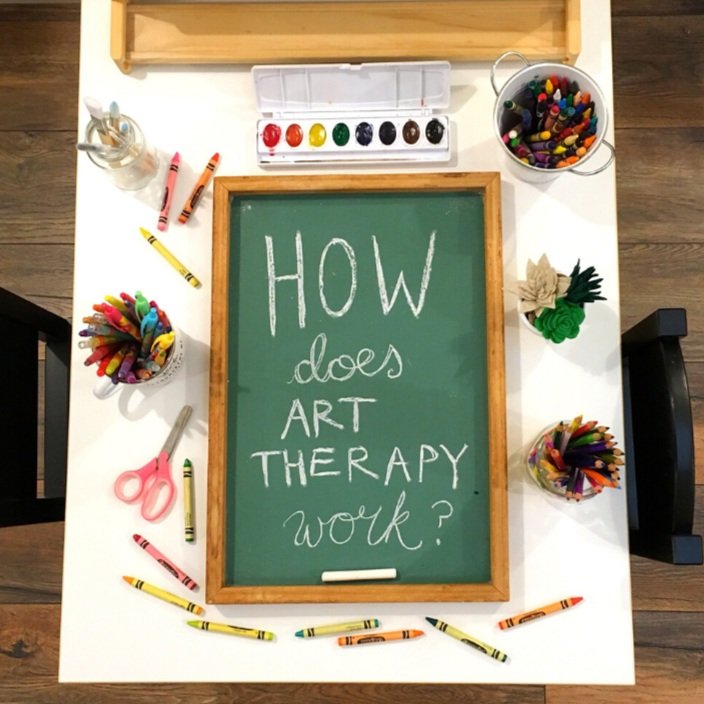How Does Art Therapy Work? Part 1: Process
Art therapy is an experiential therapy. Instead of only talking about a challenge, we also do something together to practice how the client might be able to face that challenge. We work towards goals and build the client’s tool kit by making and playing.
Sometimes, this happens through the art PROCESS.
For example, let’s imagine that a child is coming to art therapy because they are struggling with frustration at school. They have been trying to communicate that they’re struggling by hitting their friends, refusing to participate in challenging tasks, and wrecking things out of frustration.
Our goal for art therapy is to build the child’s frustration tolerance so that they can engage in the ways they want to, and let their creativity and kindness shine at school.
During our art therapy session, I might invite this child to build a sculpture using Styrofoam balls and toothpicks. This is a fun, play-based activity, but the materials require fine motor coordination, precision, and patience. The task is inherently a bit frustrating.
This is intentional on my part. Since the child and I have a positive, trusting relationship, the art therapy session is a safe space for them to experience a little frustration. If they feel a bit frustrated while we are together, then we can practice different ways of responding to the situation.
Styrofoam and toothpick sculpture.
This is where the real “work” happens. Maybe when things start to feel tough, the child responds by wrecking the sculpture. I am there to keep the child safe, to witness their actions, to honour their emotions, and to help them make connections.
We can talk about what happened, and process any feelings of sadness or disappointment. We can explore whether destroying the sculpture helped them to feel better or worse. We can reflect on how this action didn’t really help them to accomplish their goals.
Then, if the child is open, I can show them that there are other options. Maybe we can try again, and this time when I notice that things are starting to feel challenging, I can say “Stop!”
We can pause and take a deep breath. Then after a break, maybe the child feels ready to try again. They can experience that after taking a break, they get a little further than before.
The child learns that they are more powerful than their frustration, and they CAN do the difficult task.
This is an example of how the art process, supported by the therapeutic relationship, can build a child’s internal tool of frustration tolerance. The learning is concrete and experiential – it’s happening right now as we build together.
Once we find what works for the child, I help them to imagine how they might use those same strategies at school. For example, when they start to feel frustrated at recess, they can stop and take a deep breath instead of hitting their friend.
I could have started the session by saying to the child, “When you feel frustrated with your friends, you need to stop and take a deep breath.” The child may or may not listen to me, and they may or may not remember this strategy.
But if the child has EXPERIENCED first-hand how taking a deep breath helps the frustration to melt away, this is a much stronger motivation for the child to try that strategy again.
It’s a co-created strategy, because the child was involved in the process of figuring out what works for them.
For some children, taking a deep breath won’t be the best strategy. Maybe for them it will be asking for help, or walking away and doing something else for a minute. But as we participate in the art process together, we can try things and figure out what works best for them.
This process is empowering for the child. They experience a sense of ownership and pride, which will increase their confidence and the likelihood that they will actually use their internal tool kit. They were a part of creating it, rather than just being told to use it.
For me, this is the power of art therapy. The process is where the learning, growth, and magic happens.


